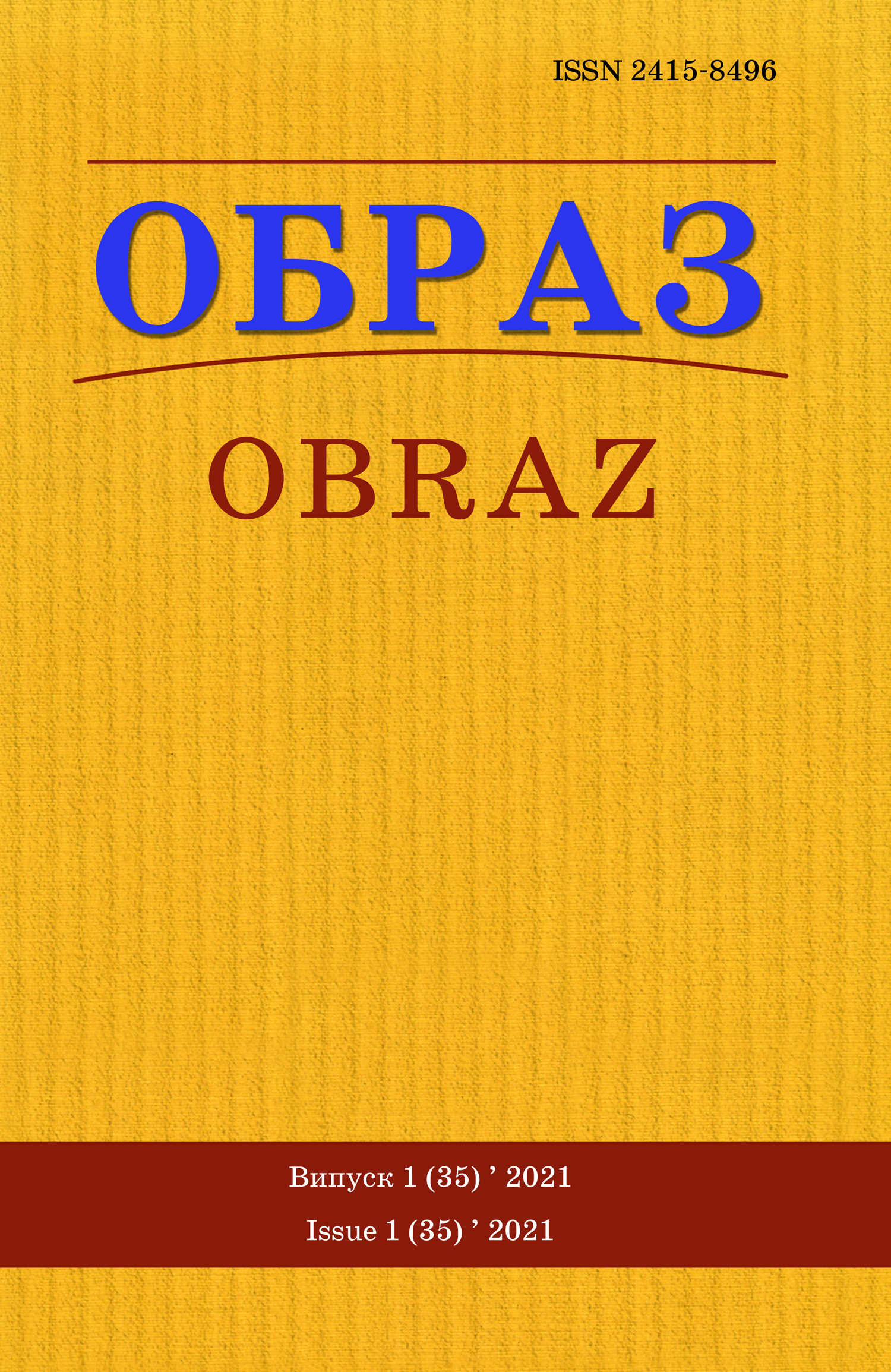Abstract
Introduction. The article deals with the features of constructing the visual image of a «Ukrainian bourgeois nationalist» (hereinafter UBN) in cartoons of Soviet Ukrainian satiric press, on an example of «Perets’» («The Pepper») magazine in 1941–1991. The article aims to analyze and systematize the visual manifestations and features of the image of the UBN in the «Perets’» magazine cartoons in 1941–1991, to consider the changes of this image over time. Methodology. The methods of research include observation, content analysis, generalization, comparison, quantification, data visualization. The observed visual markers of the image in every case were noted and put in the electronic table (presence – «1», absence – «0»). Further processing of the data set allowed to establish the total count and percentage of occurrences of a visual marker, to determine the distribution of certain features by years, decades, and issues of the annual publishing cycle, to investigate their dynamics and trends changes. Results. The UBN image in the «Perets’» cartoons in 1941–1991 was generally based on an old established image of the «Petliurist» and usually reproduced its traditional visual markers – a fur hat with a long hood (shlyk) (presented in 77 % of cartoons), the Trident emblem (74 %), and blue-yellow colors (49 %). Another distinctive visual marker – a «mazepynka» cap, an attribute of a generalized «Banderite» image – was presented much less (7 %) and acquired a characteristic value relatively late. A noticeable but not unique visual marker of the UBN image were items of Ukrainian ethnic clothing. To distinguish between the positive (Ukrainian folk heritage) and negative («nationalist») meanings of this visual detail, the cartoons featured a motif of an embroidered shirt with an ornament of «nationalist» tridents or Nazi swastikas. Items of Ukrainian ethnic clothing could be grotesquely combined with elements of Western costume. Among the characteristic attributes of the image, one should notice the US dollar (22 % of images), and a tough weapon: a knife or an ax (20 %). The swastika (27 %) associates the character with Nazism. However, in the same way, the UBN was portrayed as a beggar and looked more miserable and powerless than formidable. A characteristic feature of the evolution of the image of the UBN in «Perets’» caricatures was a remarkable spread of the new role of this character in the 1970s, a «slanderer» propagating «anti-Soviet ideas» through «enemy radio voices» such as Radio Liberty. The associated trends were the spread of dehumanization of the character in the form of a dog or dog-like creature, as well as the emergence of a new attribute, a bucket of mud. Another ideological plot – the opposition between prosperous Soviet Ukraine or the USSR, and images of its defeated or unfinished «nationalist» enemies – had flourished in the 1960s, and then gradually declined. The maximum frequency of use of the UBN image in the «Perets’» accounted for in 1957, 1967, and 1982. In general, the most regular and systematic treatment of this topic took place in the 1970s. Often, cartoon images of UBN had appeared on ideologically important anniversaries. In the 1980s, the appearance of cartoon images of UBN became less frequent, and after 1987 they disappeared completely. Conclusions. The significance of the article lies in the comprehensive consideration of an insufficiently researched topic using a quantitative approach. This paper can be the basis for further research and analysis of rare early issues of «Perets’» in the 1940s; the UBN image in cartoons in the context of another iconic «images of enemies»; finally, the features of representation of specific personalities in this genre.
References
1. Hela. O. (2016). Anti-religious propaganda in the «Perets’» magazine in 1953–1964: an experience of use of databases. Historians. May 26. URL: http://www.historians.in.ua/index.php/ en/doslidzhennya/1906-hela-o-m-antyrelihiina-propahanda-na-storinkakh-zhurnalu-perets-v1953-1964-rr-dosvid-vykorystannia-baz-danykh (accessed 26.02.2021)
2. Hela, O. (2019). Caricature as simulacra: the construction of images of the intelligentsia by Soviet satirical publications in 1922–1991. Actual problems of national and world history. Kharkiv. Issue 22. P. 44–51.
3. Yeremeieva, K. (2018). «Pepper and pepper some more!»: Mission of the activity of the soviet satirical publications (for example of magazine «Perets’»). Ukrainian historical journal. No. 1. P. 126–140.
4. Yeremeieva, K. (2016). The political humor of Soviet Ukraine in 1941–1991 (on an example of «Perets» magazine). A PhD thesis. Specialty 07.00.01 «History of Ukraine». Kharkiv. 257 p.
5. Yeremeieva, K. (2013). «Soviet Ukrainian» or a local version of the «Soviet people»: the means of marking of citizens of the USSR in the official and unofficial humorous discourses. Actual problems of national and world history. Kharkiv. Issue 16. P. 158–167.
6. Sobokar, I. (2017). Ukrainian «Perets» magazine in the paradigm of satirical journalism. Dnipropetrovsk University Bulletin: Social Communications. Issue 17. P. 109–115.
7. Strilchuk, A. (2018). «Their manners and amusements»: the image of the West on the pages of the Soviet satirical magazines (1960s–1980s). Hileya: naukovyy visnyk. Issue 135. С. 56–58.
8. Yakovliev, A. (2018). Between creativity and reality: the categories of the enemies within in the «Perets» magazine: Late Stalinism era. New pages of Donbas History. Issue 27. P. 209–222.
9. Yakovliev, A. (2017). The image of the USA and Great Britain in the political cartoon magazine «Perets» in the first years of the Cold War. Shkid. No. 5 (171). P. 60–64.
10. Abraham, L. (2009). Effectiveness of cartoons as a uniquely visual medium for orienting social issues. Journalism & Communication Monographs, 11(2). P. 117–165.
11. Ames, W. Caricature and cartoon. Britannica. URL https://www.britannica.com/art/ caricature-and-cartoon (accessed 26.02.2021)
12. Huntington, H.E. (2013). Subversive Memes: Internet Memes as a Form of Visual Rhetoric. AoIR Selected Papers of Internet Research, 3. URL: https://www.academia.edu/download/32547359/Huntington_AoIR2012_paper.pdf (accessed 26.02.2021)
13. Keane, D. (2008). Cartoon Violence and Freedom of Expression. Human Rights Quarterly. Vol. 30, No. 4. P. 845–875.
14. Kuipers, G. (2002). Media culture and internet disaster jokes: Bin Laden and the attacks on the World Trade Center. European Journal of Cultural Studies, 5(4). P. 450–470.

This work is licensed under a Creative Commons Attribution 4.0 International License.

